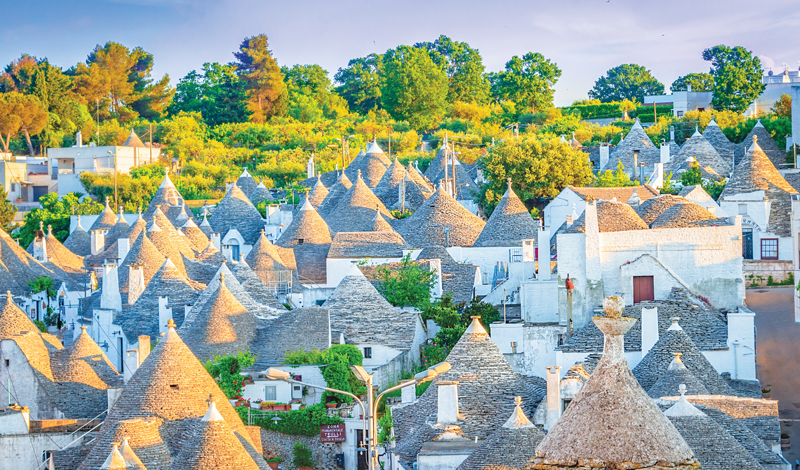Recognized as i borghi più belli d’Italia, or one of “the most beautiful villages of Italy,” Alberobello is famous for its characteristic conic houses called trulli. Commissioned by Count Giangirolamo II (1600–65) in the 1630s, the unique structures were built by farmers to use as their personal residences as they worked the land. The rooftops are decorated with religious, astrological and mythological symbols painted in white ash, believed to protect inhabitants. All were constructed with loose limestone slabs without any mortar, and legends suggest that this unorthodox construction technique served a specific purpose: when tax inspectors from the sovereign Kingdom of Naples visited the town, the homes could be quickly dismantled, allowing the Count to evade paying “new settlement” taxes. Many trulli have since been abandoned or repurposed as tourist attractions, but the trulli in the town’s old district of Rione Aia Piccola are still used and maintained as local residences today.
—Prepared by the World Tribune staff
July 12, 2024, World Tribune, p. 12
You are reading {{ meterCount }} of {{ meterMax }} free premium articles

